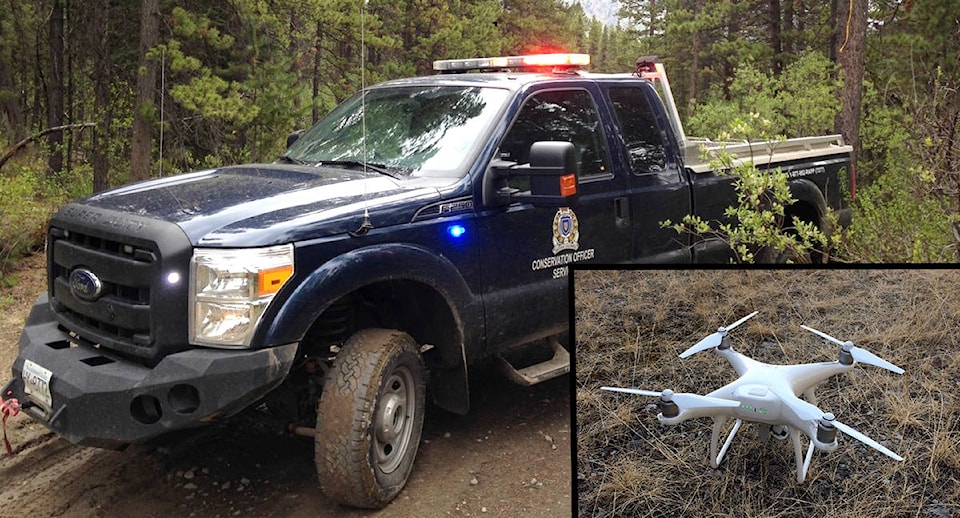The introduction of drones to the Conservation Officer Service has proved useful for crews in the Elk Valley.
In April, The Free Press reported that conservation officers had acquired a DJI Phantom 4 drone, which was to be shared by two officers throughout the West and East Kootenays.
At the time, it was praised by officers as a new means of monitoring large areas of land and assisting with the management of kill zones and problem wildlife.
Conservation Officer Ryan Gordon is the local conservation officer who has been operating the drone for the past eight months and reaffirmed that the introduction of the new technology has been a success.
“It has been utilized when wildlife is caught in traps, allowing the conservation officers to assess the animal and the area before proceeding into the trapped animal,” he said.
Gordon explained that the drone has been used in several of the East Kootenay Access Management areas, and that it allows officers to have an aerial view of the area to determine non-compliance, areas of concern or an offense in progress.
“Prior to having access to the drone, the only way to achieve this was through the use of helicopters which are costly,” said Gordon.
Since its introduction, the drone has also been used to locate injured animals, animals that have been shot and left behind, as well as predator attacks on individuals.
In April, The Free Press reported that the CO Service was working on acquiring an exemption to fly the drone out of sight and to use the full potential of the drone, which has a fly range of five kilometres.
Eight months later, Gordon explained that the result of the application for an exemption failed.
“The CO Service UAV pilots have a Special Flight Operators Certificate from Transport Canada,” said Gordon.
“This allows us to operate the UAVs for work purposes, but does not allow flying outside of the visual line of sight.”
This summer, the CO Service was challenged by the fire season, which made flying the drone difficult.
With the increase in helicopter traffic in areas with low visibility, the drone didn’t see much use during the fire season.
Additionally, officers have found that the Elk Valley’s mountainous terrain and thick forests have been difficult for officers when flying the drone.
The CO Service would like to remind the public that it is illegal to operate a drone while hunting or trapping, or be in possession of a drone while hunting.
Additionally, while hunting, it is illegal to use information obtained from a drone less than six hours before the start of the expedition.
